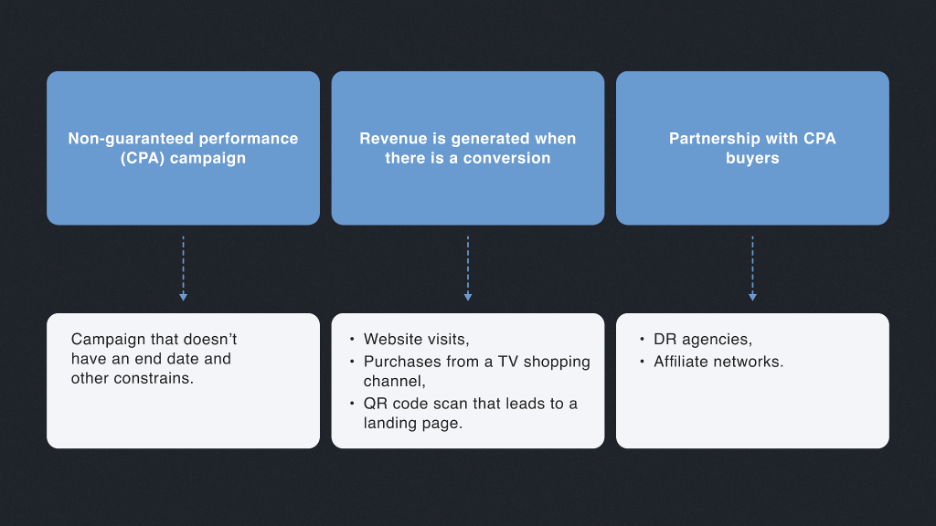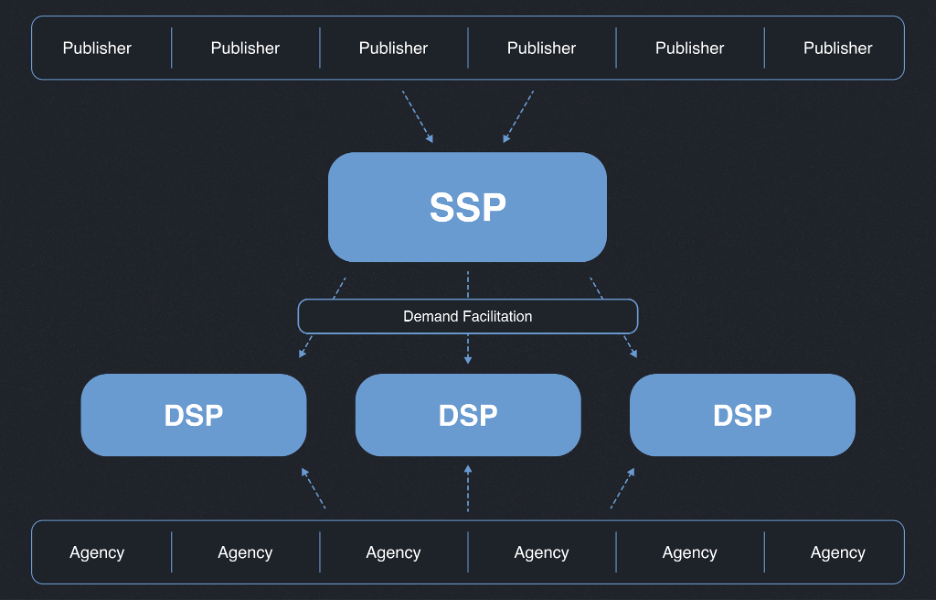
Learn how video publishers can optimize ad revenue through data-driven metrics, building a strong demand stack, and exploring alternative revenue streams like audience extension. Boost your strategy with these actionable insights for CTV and FAST monetization.
New players entering the CTV and streaming TV advertising game must overcome specific roadblocks. From low inventory prices and a limited viewership base to few partnerships with premium advertisers, it can take a long time before your expenses pay off and you enter the growth stage.
But the good news? There are ways to fast-track your path to revenue growth and get those ad dollars flowing in sooner rather than later.
To scale your revenue effectively, focus on a few key areas: setting and tracking the right metrics, expanding your pool of demand partners, and finding creative ways to increase revenue through alternative methods. Here’s how you can piece together a strategy that works for you.
Steps to Create Ad Monetization Strategy
- Set Metrics That Matter
In CTV/FAST advertising, you will focus on the revenue generated from your ad pod — a commercial break of a specific length. So, you need to factor in the duration of the video ad slot and calculate how much you can earn from it. The most optimal way to do so is to calculate RPS (Revenue per Second).
RPS is a metric that defines revenue per 1000 ad impressions:
RPS= CPM/Ad duration
While RPS will suggest the most optimal way to structure ad slots, it won’t factor in customer acquisition costs and accompanying expenses. Therefore, premium publishers should focus on tracking Average Revenue per User (ARPU). By calculating ARPU, you’re not just looking at how much each ad slot earns — you’re understanding how much each viewer contributes to your revenue over time.
ARPU is calculated by dividing the total revenue by the total number of impressions per specific period per each device:
ARPU= (Number of impressions*(CPM/1000)) divided by device count
Say a new video publisher sells its inventory at $4 CPM and has 7,500 monthly impression opportunities per device. The ARPU will be calculated as follows:
7500*4/1000=$30
The monthly ARPU reaches $30, assuming there’s 100% fill. This figure tells us that each active user contributed $30 in revenue.
- Build a Strong Demand Stack
Instead of gradually building up the demand stack for transactions, you can generate more chances to sell ad slots. In this context, consider implementing a backfill strategy, which helps monetize impression opportunities with no placed bids in the programmatic flow.
Say interested buyers need more time to be ready to pay for an ad opportunity. You can turn to CPA (cost per action) buyers — direct response (DR) agencies and affiliate networks. These parties pay per conversion, such as website visits, purchases from a TV shopping channel, or registration forms.
- Scale Revenue
Monitoring your metrics will show how to build ads for the ad break with the best yield.
Monitor and Optimize RPS
When focusing on RPS, you can filter out underperforming ads. For example, some video publishers would stick only to 15-second ads and improve yield.
However, you may only sometimes have control over how much an advertiser is willing to pay. In such cases, it’s advantageous to have multiple buyers bidding on your ad slots. This scenario, known as bid density, focuses on increasing the number of buyers interested in purchasing your ad space. The higher the bid density, the better the chances of maximizing your revenue.
How to Increase the Bid Density?
You should encourage media buyers to secure ad slots and submit more attractive bids than competitors. Supply partners usually have a specially allocated sales team. You, in turn, will need a sales unit of experienced specialists capable of bringing aboard different advertisers. They will negotiate and convince ten, twenty, and more partners to bid on the inventory.
Monitor and optimize ARPU
Optimizing CAC and verifying that the LTV (lifetime value derived from ARPU) surpasses CAC and associated viewer expenses is best for publishers tracking ARPU. LTV acts as a rough ROI on CAC investment over time, but you must also factor in churn.
So you’ve minimized your revenue loss – time to level up your strategy:
Through Demand Facilitation.
The idea is to negotiate with demand facilitation partners to secure more impression opportunities. Third-party SSPs such as Xandr aggregate multiple publishers’ inventory through packaging similar offerings. This involves bundling diverse content, such as sports programs, comedies, movies, etc., to create enticing sales packages for DSPs.
Through Invite-only Programmatic Demand.
This approach involves elevating the status of your inventory to premium and selectively granting access only to specific advertisers. To execute this strategy, you will rely on a combination of SSP demand facilitation and direct DSP integrations enabled by your custom AdTech development vendor.
Through Direct Deals.
Direct deals involve your negotiations with SSPs. They enhance revenue through strategic partnerships and serve as a ground for educating the market. Engaging in direct contracts with high-profile advertisers creates valuable PR opportunities, establishing credibility and increasing awareness in the market.
…Or Through an Alternative Revenue Stream – Audience Extension (AudEx)
Video publishers can leverage AudEx to accept advertising contracts by procuring inventory from other suppliers within the ecosystem. This move helps to enhance the perceived scale of operations and surpass the limitations of the current user base.
Improve Your Revenue Using A Comprehensive Approach
It takes various ad monetization strategies, focusing on metrics, demand stack build-up, and alternative revenue streams to get ahead of the game. Each tactic offers a unique approach to optimizing costs and expanding viewership.
Success relies on strategic planning, data-driven decision-making, and a dedicated team of specialists who will implement the strategy. By aligning these elements, new video publishers can overcome initial challenges and establish a solid foundation for future growth.

